Wartime survey of Ukrainian society / tenth wave

*You can download the report with infographics using the form below.
Despite the fatigue and tension that prevail in the mood of the population, the share of employed citizens is growing. What other changes have been recorded in the mood of Ukrainians? Gradus Research conducted the tenth wave of the survey as part of the project "On a Big Move" to track the dynamics of changes since the beginning of the full-scale invasion.
The employment rate is growing. More and more Ukrainians are employed and work full or part-time (69% of respondents declare this now, compared to 62% in December 2023). For comparison, the lowest employment rate was in March 2022 at 24% of respondents, and has been consistently increasing since then.
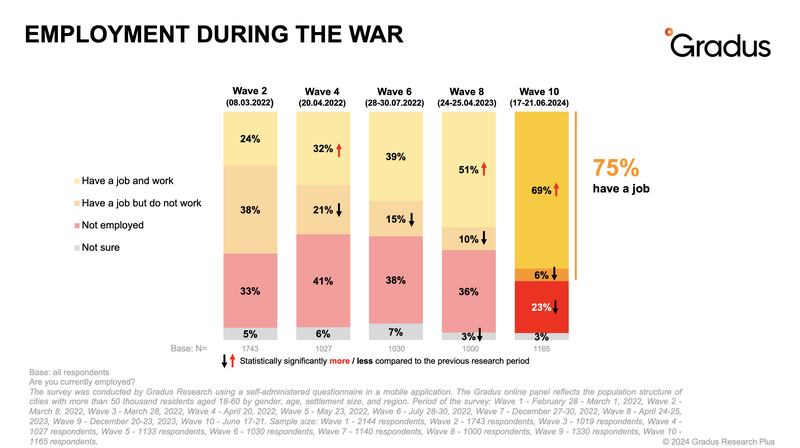
As for changes in income levels, 56% of respondents said that their salaries have decreased compared to pre-war times. While 36% of Ukrainians surveyed earn the same or more than before the full-scale invasion.
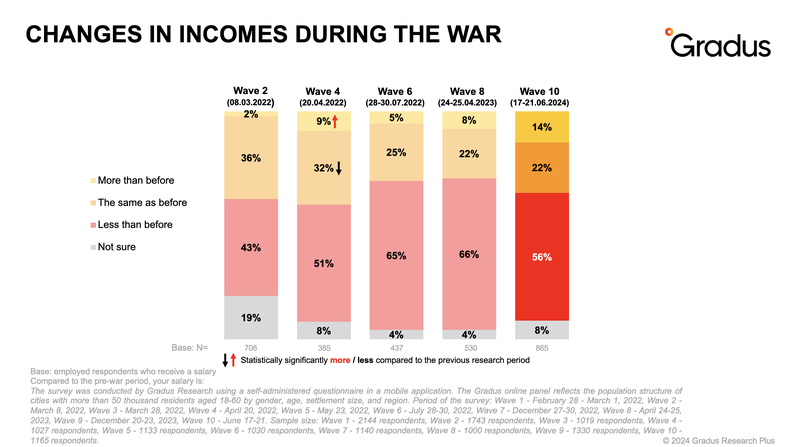
“The fact that the level of employment is increasing can positively influence the decision of Ukrainians to return home. After all, having a job is one of the key factors in returning. Moreover, the results also show an increase in intentions to stay in Ukraine if the situation worsens - currently, the vast majority (62%) of Ukrainians surveyed do not plan to move anywhere under such circumstances. And this is an important signal that the improvement of the job availability factor can influence the situation even if security risks remain,” says Evgeniya Blyznyuk, sociologist, CEO&Founder of Gradus Research.
Despite fatigue and the uncertain duration of the war, trust in the Armed Forces of Ukraine remains high. In general, since the beginning of the full-scale war, this indicator has not changed significantly and is currently at 59%, while in 2022 it was 63%.
Military assistance from Western countries and the strength of the Armed Forces of Ukraine are the two major keys to Ukraine's victory in the war with russia, according to the surveyed citizens (61% and 58% respectively). At the same time, respondents are less likely to believe in the cohesion of society as a guarantee of victory. Compared to the data from the survey conducted in the first days of the full-scale invasion, there is a significant drop in belief in the effectiveness of the strengthening of sanctions imposed by other countries on russia, as well as in the demoralization of the russian army as a factor in our victory.
The top 5 emotions that prevail in the moods of Ukrainians remain unchanged. Fatigue continues to top the list: more than half of respondents (54%) declare this condition. Compared to the previous wave of the survey, the level of tension has slightly decreased (41% vs. 43% at the end of 2023), while there is an increase in the level of frustration (33% vs. 29% in December 2023).
As for the level of subjective stress, it has remained consistently high since April 2024, at 87-88%.
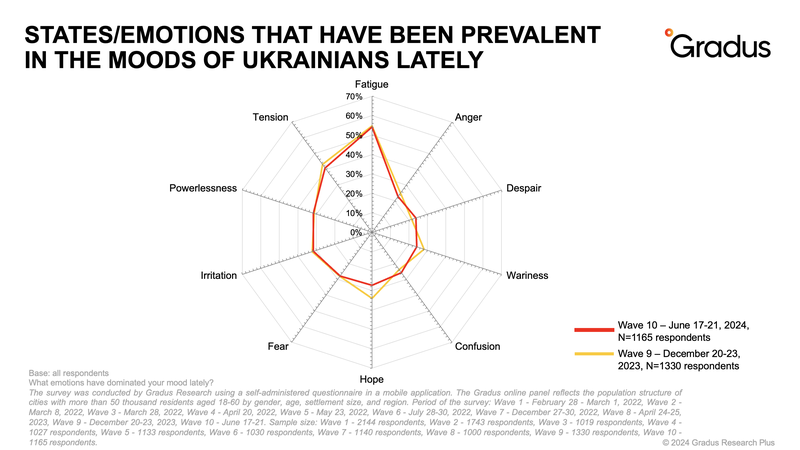
The share of those who speak Ukrainian in everyday life continues to grow. While in April 2022, the number was 53%, now the share of Ukrainian-speaking respondents is more than two-thirds - 68%.
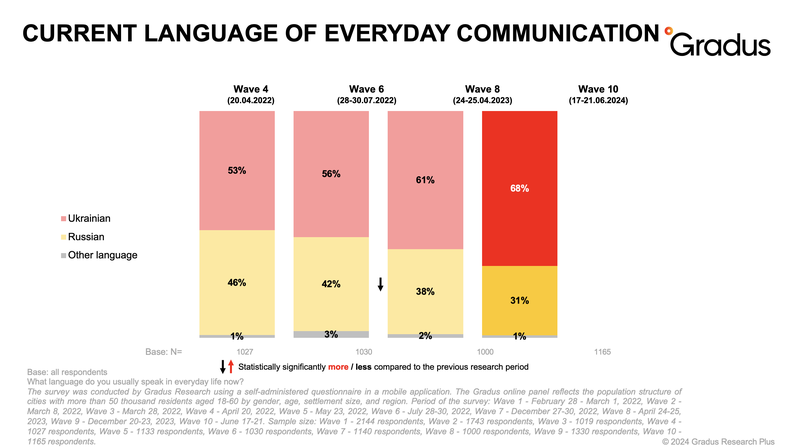
The survey report is available for download via the form below.
As part of the "On a Big Move. Wartime Survey" project, Gradus Research conducted ten waves of survey on the attitudes of Ukrainians during the war: wave I — February 28-March 1, 2022; wave II — March 8, 2022; wave III — March 28, 2022; wave IV — April 20, 2022; wave V — May 23, 2022; wave VI — July 28-30, 2022; wave VII — December 27-30, 2022; wave VIII — April 24-25, 2023; wave IX — December 20-23, 2023; wave X — June 17-21, 2024. The survey was conducted by Gradus Research using a self-administered questionnaire in the Gradus mobile application/online platform. The sample reflects the population structure of cities with more than 50 thousand residents aged 16-60 by gender, age, settlement size, and region, excluding the temporarily occupied territories and territories of active hostilities. The sample size in the tenth wave of the survey was 1165 respondents.
Other reports
-
 Research on media consumption in UkraineNovember 2025Media Consumption Under the Microscope: Ukrainians Spend More Time in Messengers Than in Front of the TV
Research on media consumption in UkraineNovember 2025Media Consumption Under the Microscope: Ukrainians Spend More Time in Messengers Than in Front of the TV -
 How has the war changed Ukrainians' eating habits?October 2025Special survey for the New Food Summit 2025
How has the war changed Ukrainians' eating habits?October 2025Special survey for the New Food Summit 2025 -
 Portrait of a Ukrainian rural woman during the warOctober 2025Special research for the International Rural Women's Day
Portrait of a Ukrainian rural woman during the warOctober 2025Special research for the International Rural Women's Day -
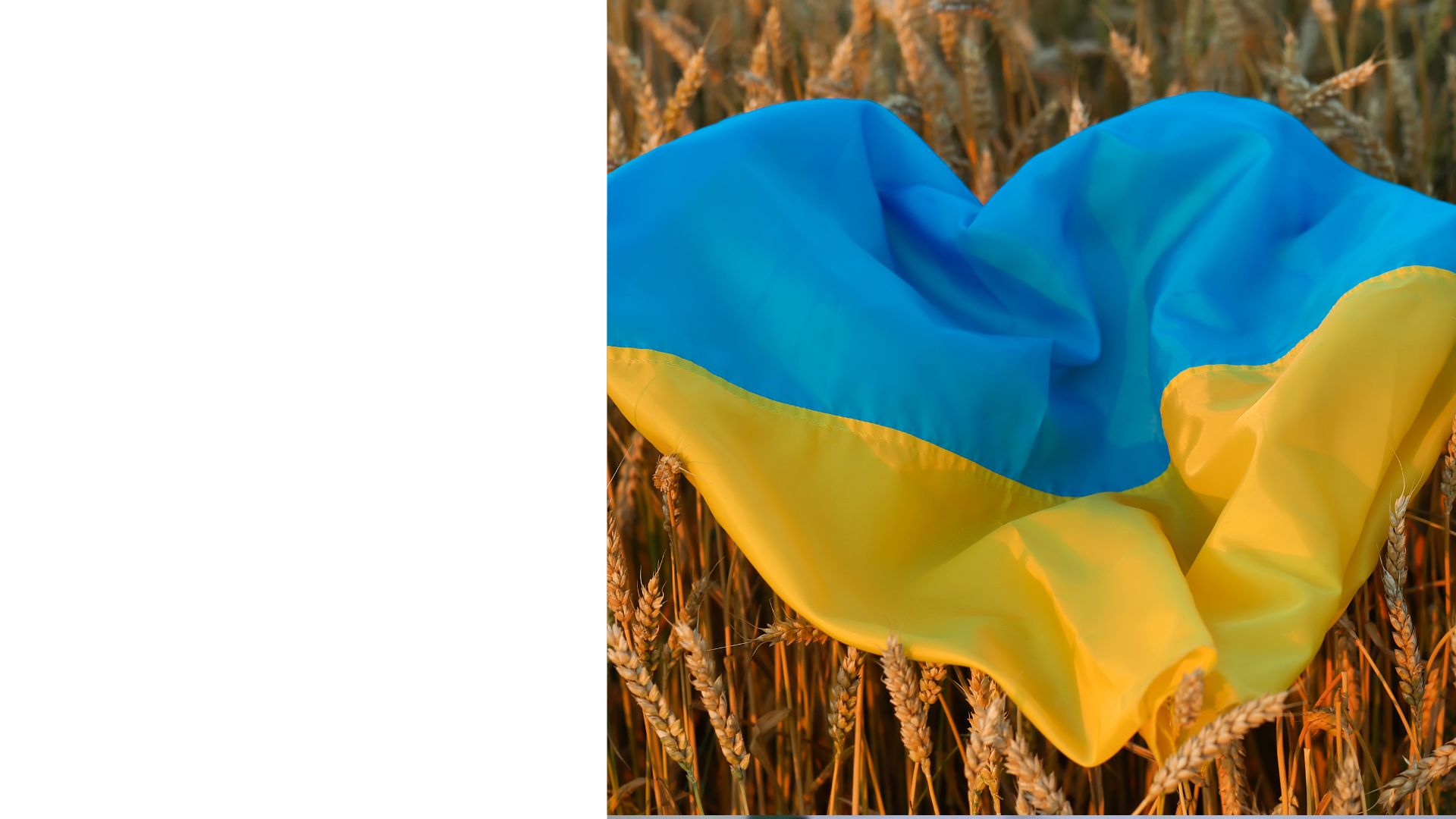 34th Anniversary of Independence: How Do Citizens See Ukraine?August 2025Special survey for the Independence Day 2025
34th Anniversary of Independence: How Do Citizens See Ukraine?August 2025Special survey for the Independence Day 2025





